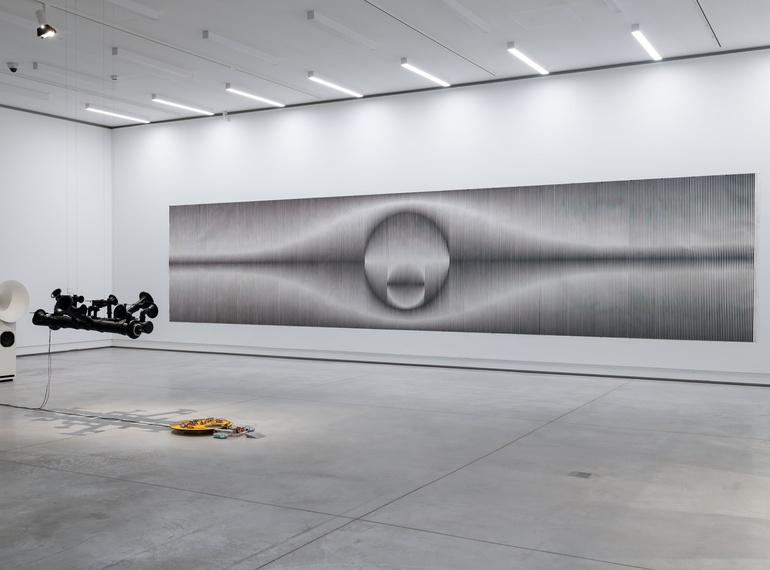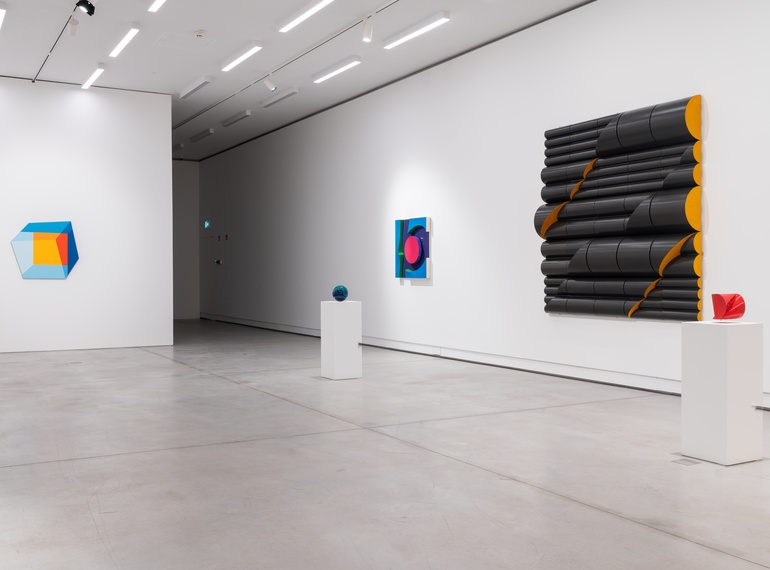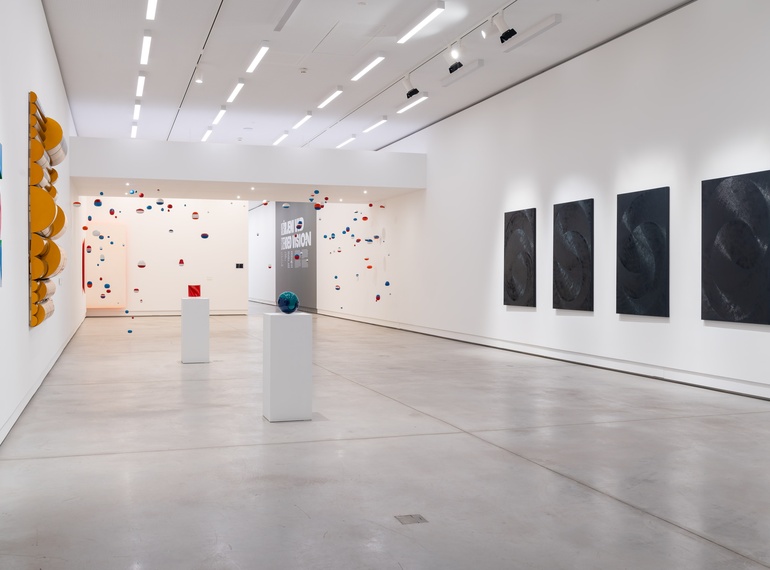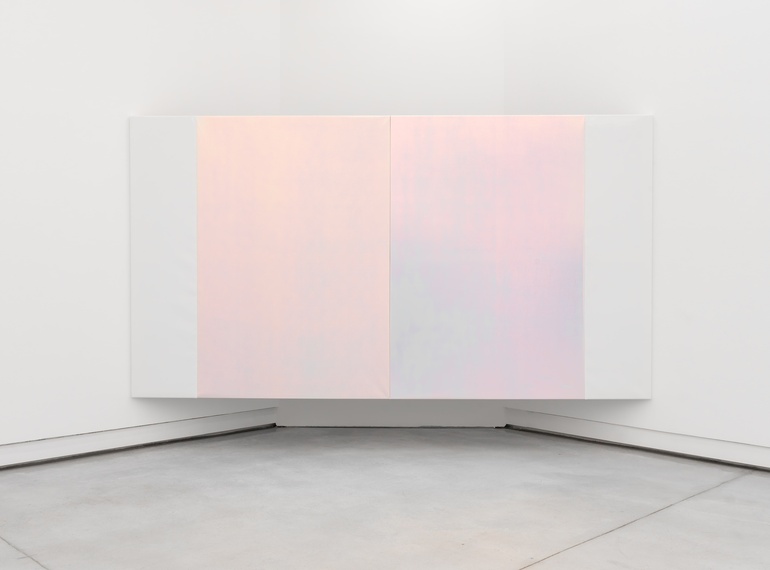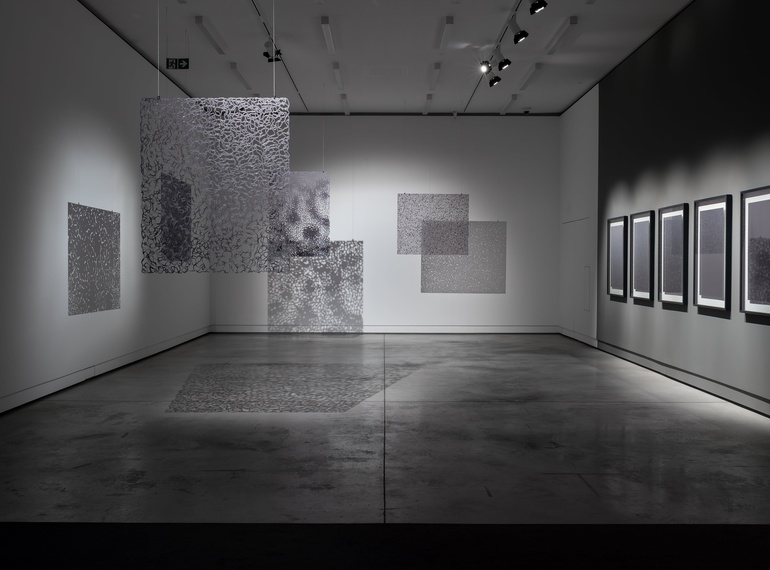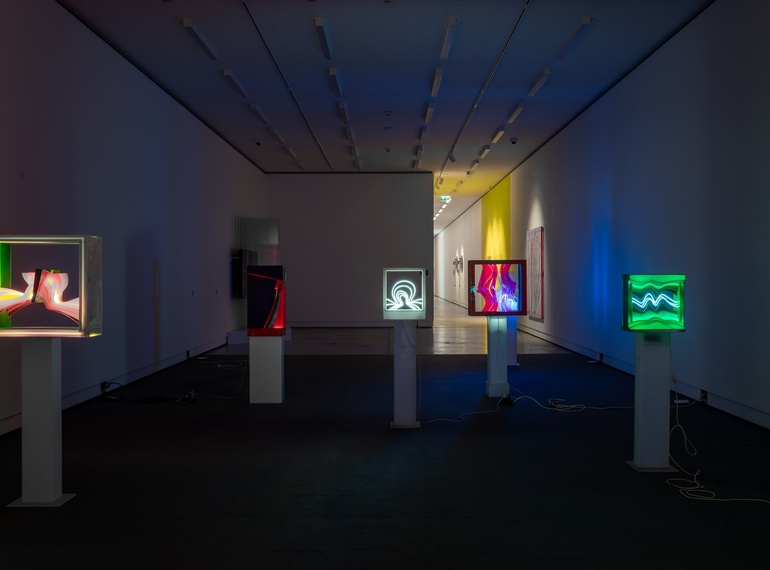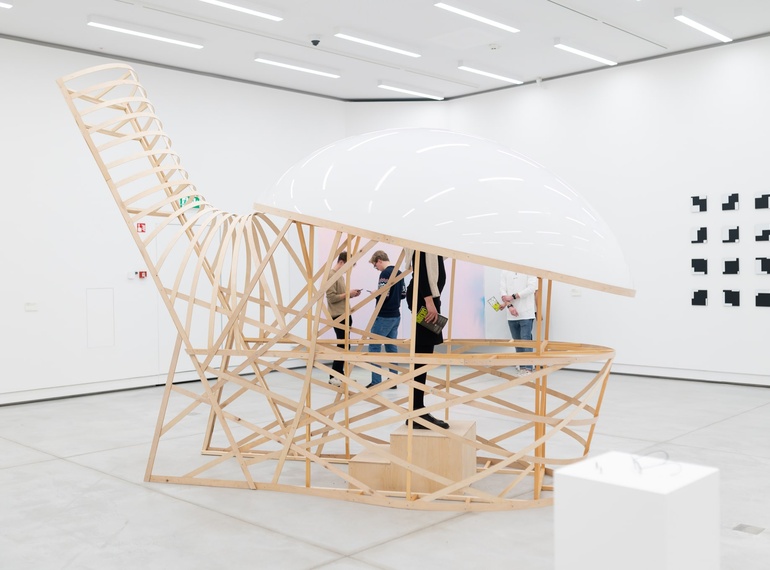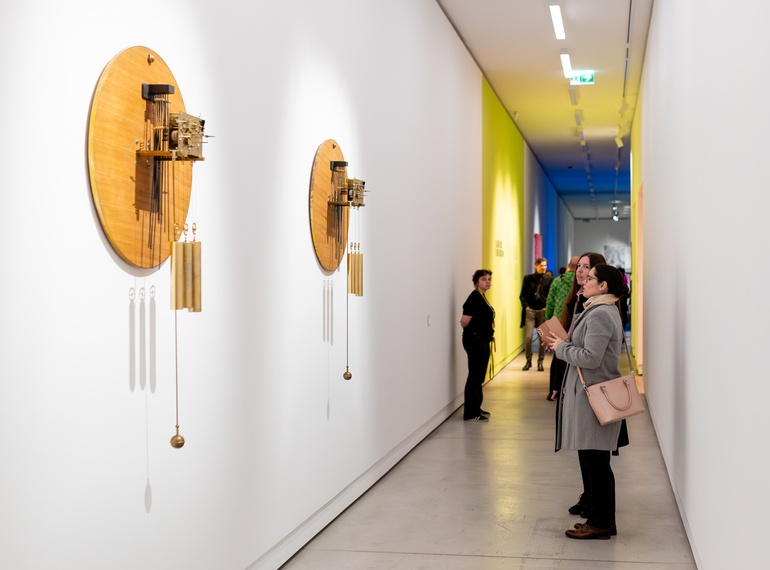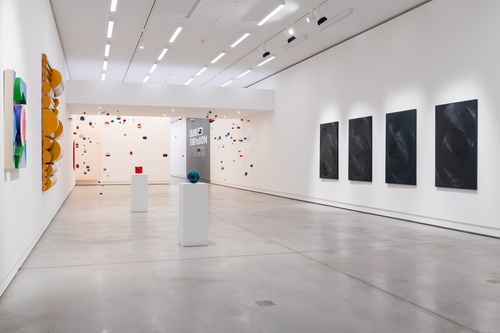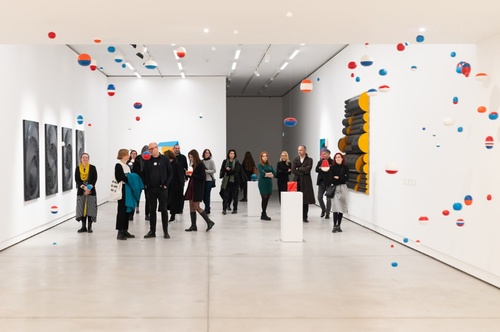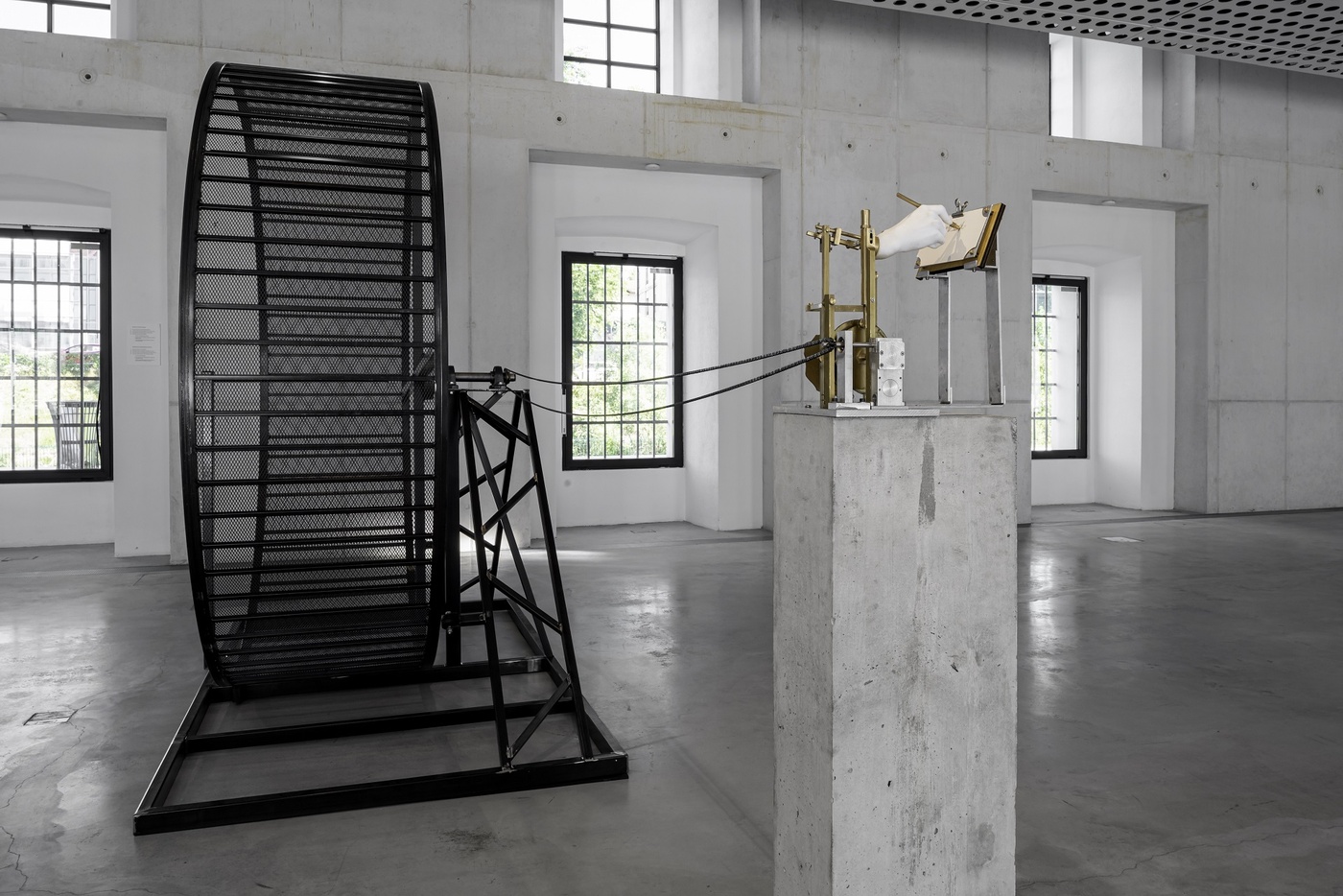Extended Vision
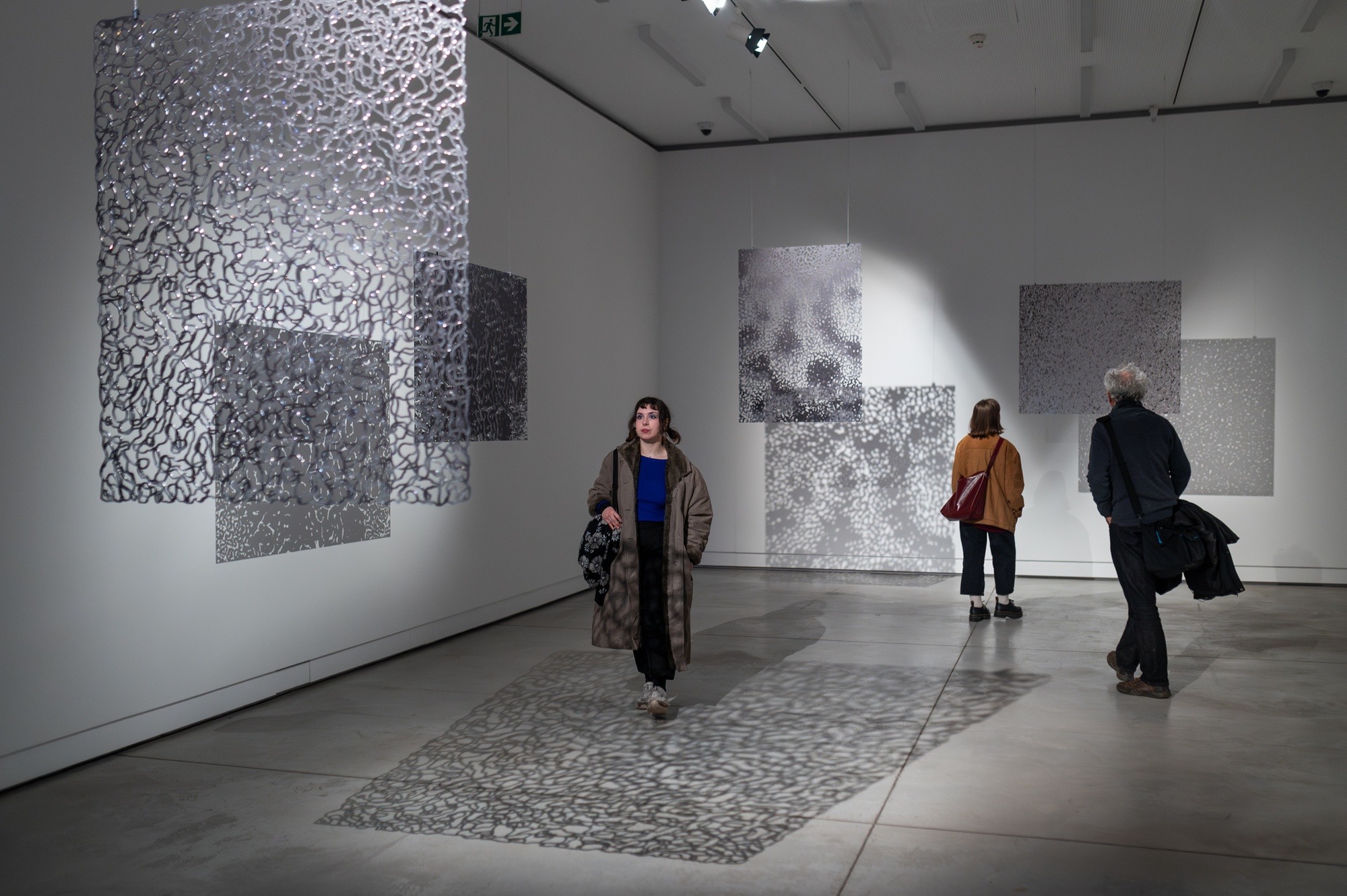
The exhibition is thematically linked to the phenomenon of perception, with the works of twenty artists whose works exploit the gaps in perception to intensify the experience of seeing.
Artists: Marko Batista, Uršula Berlot, Beti Bricelj, Ksenija Čerče, Sandi Červek, Vuk Ćosić, DK, Dušan Fišer, Vadim Fiškin, Meta Grgurevič, Sanela Jahić, Danilo Jejčič, Peter Koštrun, Blažka Križan, Oto Rimele, Nejč Slapar, Nika Špan, Dušan Tršar, Vinko Tušek, Edvard Zajec
Perception is a subject that has always fascinated both scientists and non-scientists. Nature itself offers a range of optical phenomena, such as the mirage or the iridescent colours of butterfly wings, shells and soap bubbles, and raises questions about the changeable forms in which the visible appears. Although every culture to date has created a hierarchical scale of the senses, from a survivalist perspective, vision has generally always been placed at its top. It is therefore not unusual that, in the course of historical development, vision was the first and most intensively studied aspect of our sensory apparatus. And the artistic exploration of the masters of the visual – from Altamira and Lascaux to today's virtual environments – provides scientists with an enormous resource for the study of human perception.
The "extended" in the title of the exhibition refers to the scientific discovery that seeing cannot be reduced to the sensory experience of the eye, as visual perception is an activity that involves the imagination. From childhood onwards, we encounter images and learn to "read" them. Seeing something as something is therefore an interpretative deduction that depends on the individual and their experiences. The eye is the channel through which images can affect the body and the other senses – illusions and their ability to lead us directly to experiencing something prove to be one of the most powerful tools in this respect. Visually ambiguous and unclear images force us to move and evoke sensory and emotional responses that allow us to perceive the artwork in a physical way, as the whole body is summoned to engage and focus on the interaction with the work.
The exhibition is thematically linked to the phenomenon of perception, with the works of twenty artists whose paintings, reliefs, photographs, videos, objects and installations exploit the gaps in perception to intensify the experience of seeing. They create illusions that deceive our eyes and ears by playing with colours and the elements of light and sound, their refractions and reflections. "Extended" thus also alludes to those works that have their own visual aspect, but primarily influence the viewer through sound. In some of the works, the artists decentralise the stimuli and disperse them around the space so that we have to circle around them. Others use the optical effects of contrasts between warm and cool colours or opaque and transparent materials. The third set of works shows that a single colour is enough to deceive the eye through adapted lighting in which the artists direct our gaze to the recesses and openings in their surfaces, drawing the impression of movement or undulation from the absorbent quality of black and the reflectivity of white, that retains the gaze on the surface and makes the surface a sensitive sensor for luminous nuances and subtle hues. The fourth grouping convinces us of the kinetic illusion that the image vibrates, condenses and deepens through the use of a series of lines positioned in parallel. Some of the artists use light-sensitive elements such as glass, plastic and mirrors to reflect and amalgamate the viewer into the piece. In other cases, light is freed from its normal function of illuminating and making visible what we are looking at, but becomes an object of perception itself and our questioning of reality.
Regardless of the choice of means to create the illusion or the intention to introduce a trick that combines the appearing form and all its layers of meaning into a whole, the essential dimension of the works shown is the action of the viewer. The works cannot fully unfold until the viewer recognises that there is no one and only point of view or ideal place of entrance. This is only possible by using the body to move closer and further, thus adjusting the retina. By becoming aware of the changeable appearance of the work, which is open and never final, the viewer also becomes aware of their own perception and the truth about it – that perception is a fusion of body and mind.
Curated by Alenka Trebušak
Project manager: Janja Buzečan. Exhibition and graphic design: Ajdin Bašić. Production: Eva Bolha, Janja Buzečan. Pedagogical and andragogical programme: Nina Vošnjak. Public relations: Mojca Podlesek. Tehnical crew: Andrej Črepinšek, Jože Kalan, Danilo Onečevski, Zvone Sečnik, Jernej Volk, Borut Wenzel.
Supported by: City of Ljubljana, Ministry of Culture
Thank you for loan of artworks: Center of Space Technologies Herman Potočnik Noordung, Prešeren Award Winners of Fine Arts Gallery Krank, Museum of Yugoslavia , SŽ-ŽIP, storitve, d.o.o. company, artists.
Opening hours
Tuesday to Sunday: 10.00–19.00
Tickets
Adults: 8 €
Students, retirees, visitors with disabilities: 6 €
Family ticket: 18 €
Admission free: children 7 and under, ICOM, PRESS
Press kit
You can purchase the catalog of the exhibition at the Cukrarna Gallery reception or online here.

